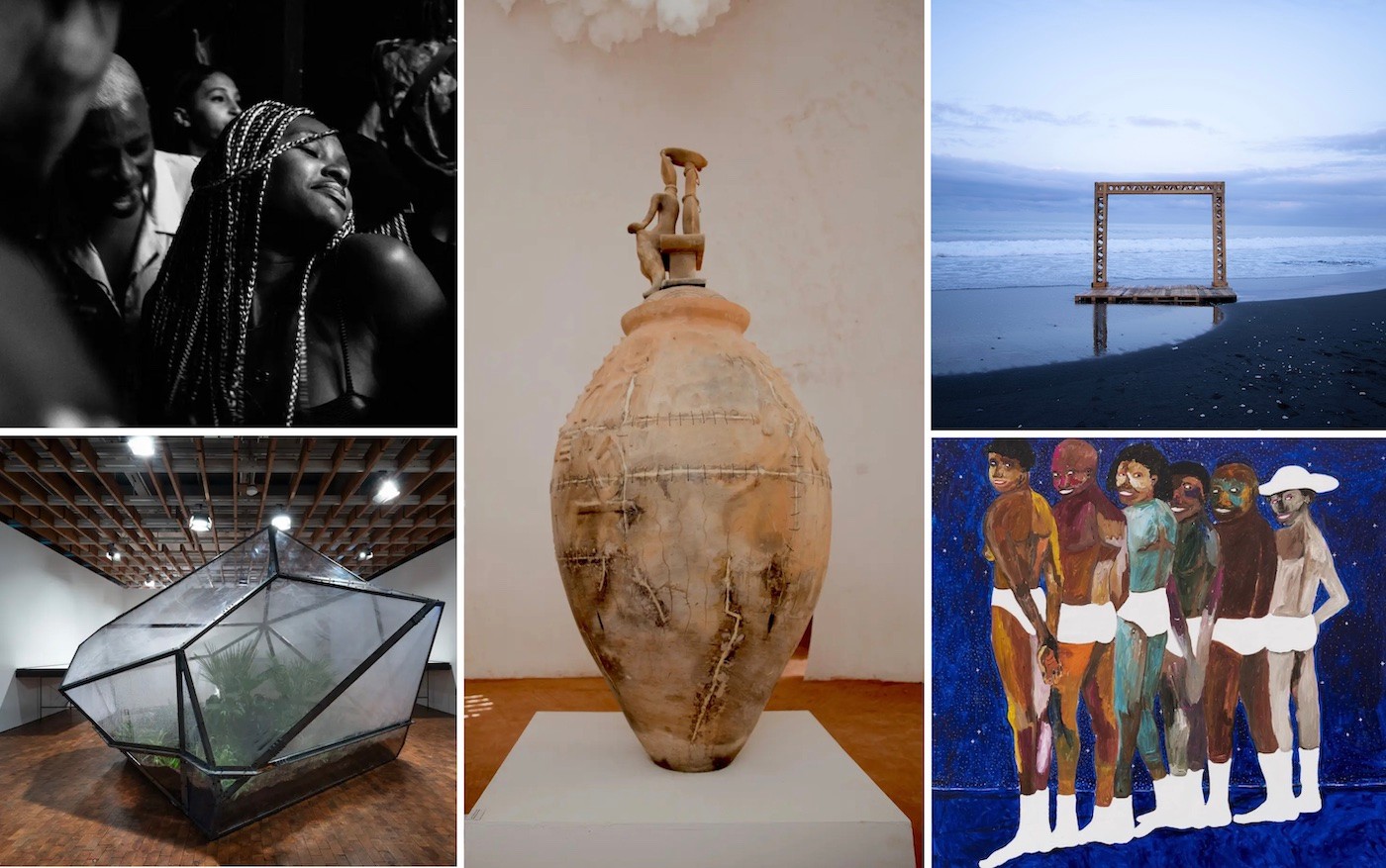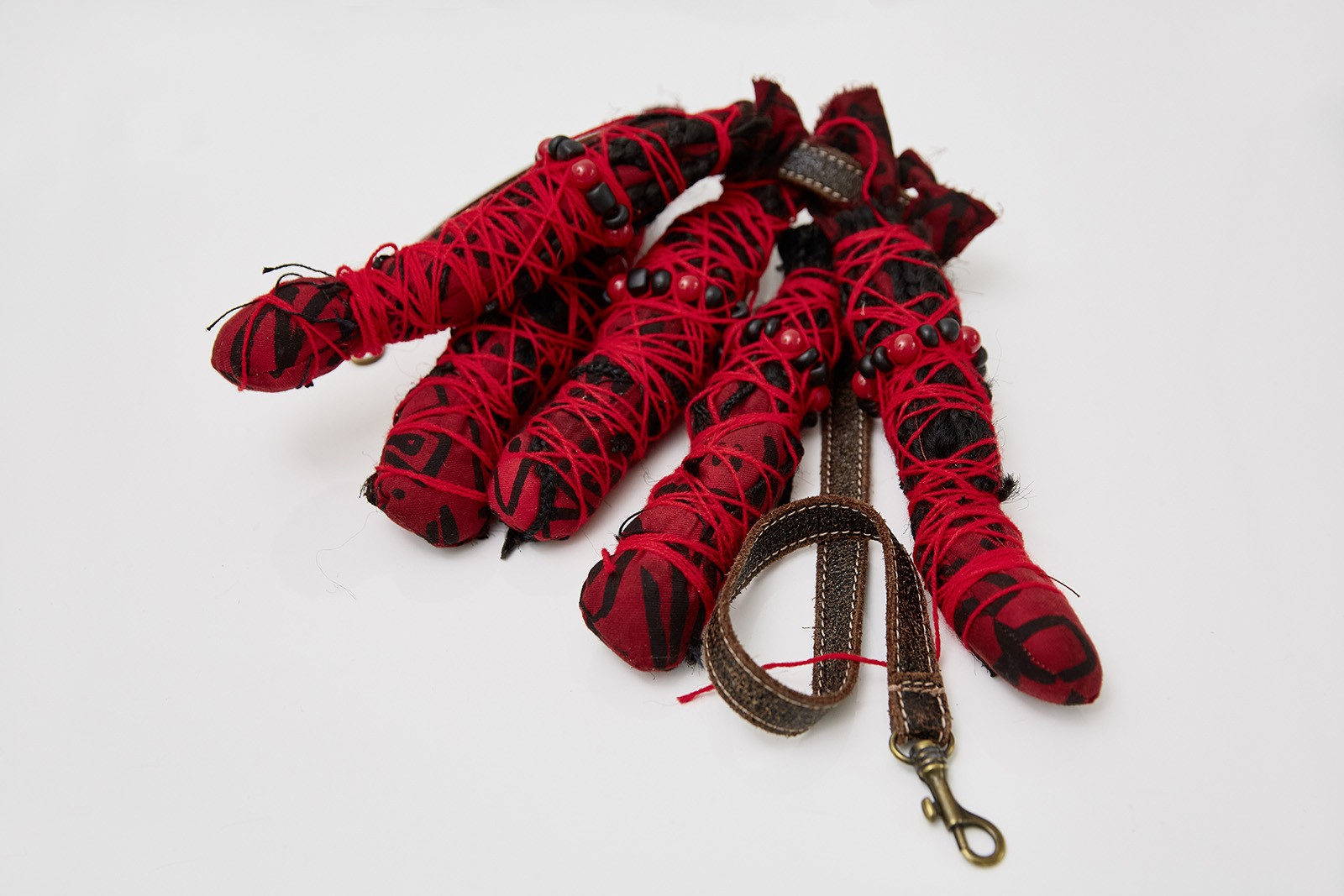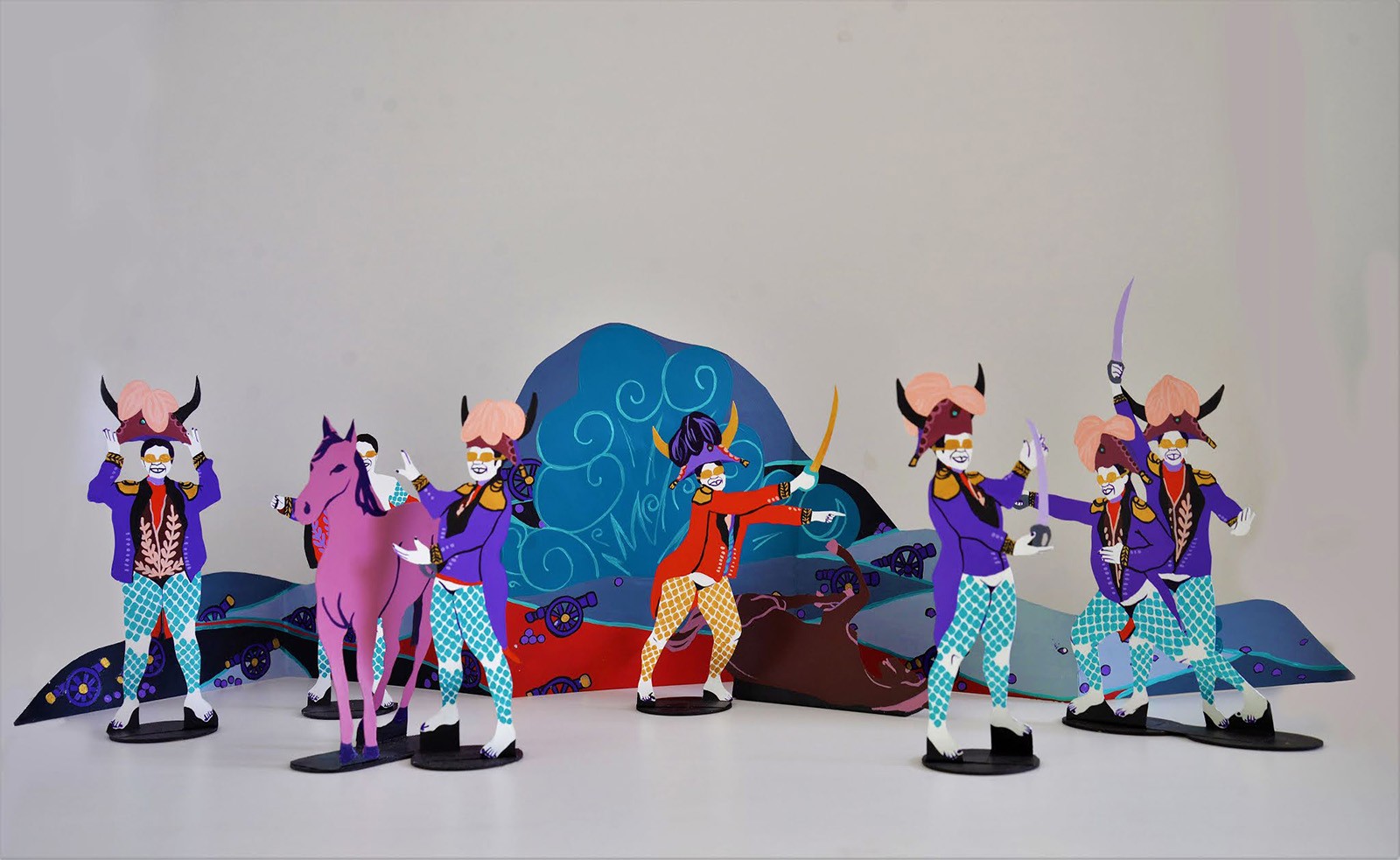Tabita Rezaire: “I prefer to stand for things I believe in”
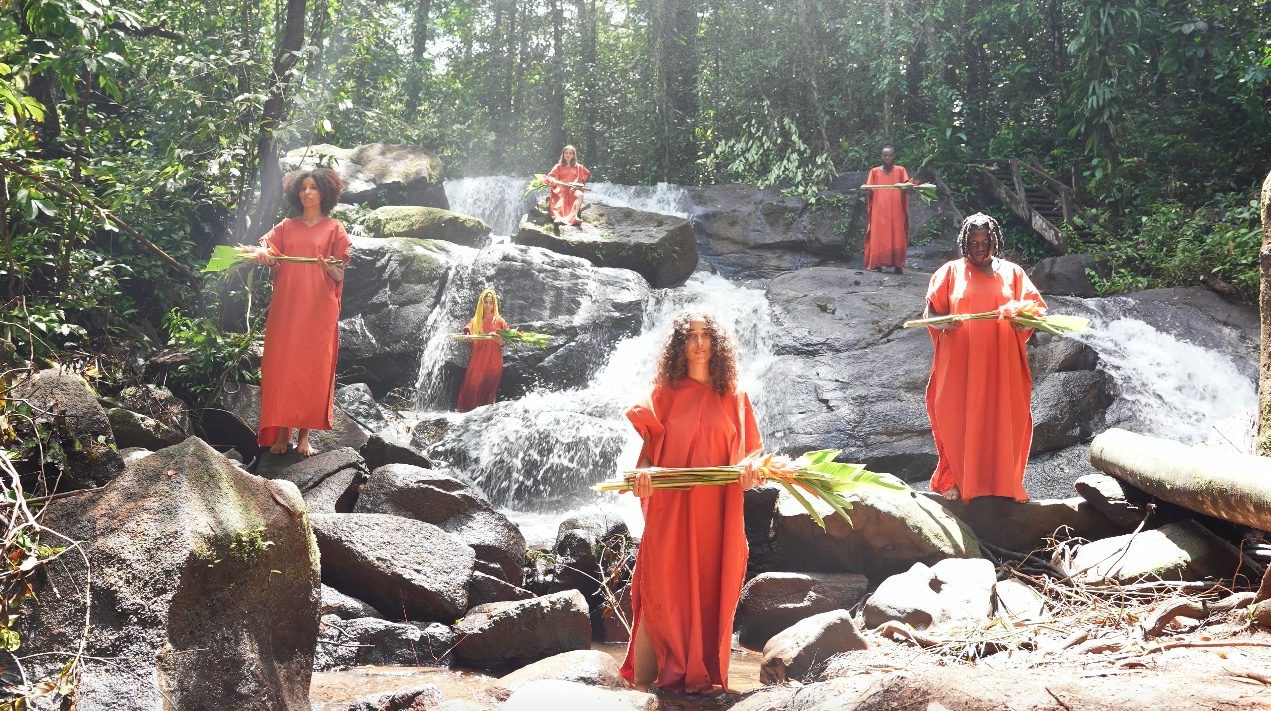
13 May 2022
Magazine C& Magazine
Words Theresa Sigmund
7 min read
In 2021, in the midst of the Amazon forest in French Guiana, artist Tabita Rezaire founded a space for spiritual being and creative exchange.
Contemporary And: What is your vision with Amakaba?
Tabita Rezaire: For a place of gathering between people, land, insects, ancestors, and spirits in the heart of the Amazon forest in French Guiana. A place of transmission for the wisdom of the earth, the body, and the cosmos. I’m devoted to a vision of somewhere where offering flowers to the ocean is like breathing, where drumming for the waterfall is an honor, where asking permission to a leaf before making medicine is a given, where mothering a new mum is understood as indispensable for the wellbeing of future generations, where the wisdom of the divine feminine is embodied, where feeding the soil is a commitment, where listening to the stories of the elders is our inspiration, where knowing when to plant and harvest according to the moon is science, where keeping ancestral traditions alive is a calling, where living in communion with(in) the forest is our shared responsibility. Amakaba is an offering to the lineages of the womb: the womb of the mother, the womb of the earth, the womb of the cosmos.
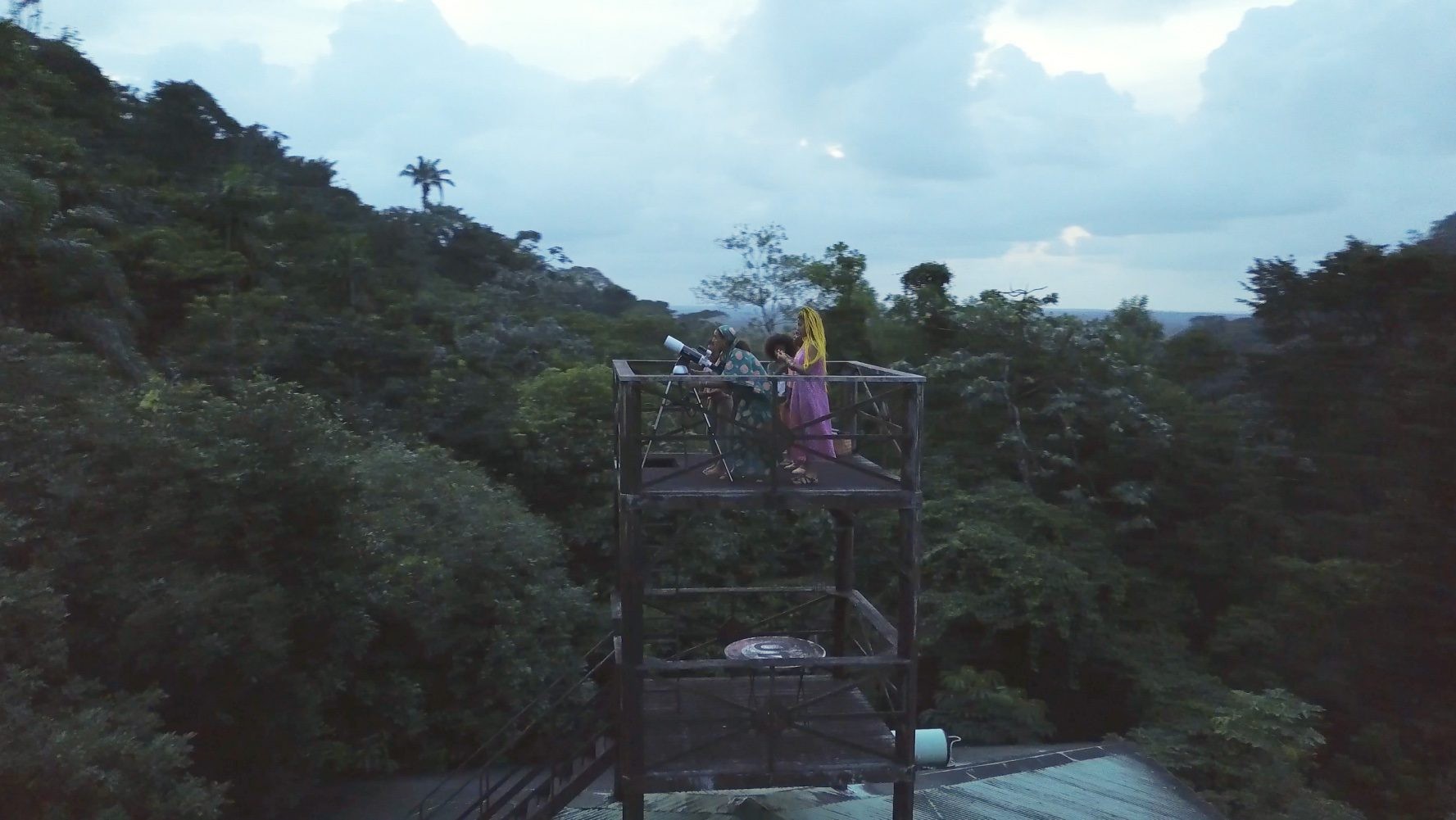
Amakaba, introduction video (still), 2021. Courtesy of Amakaba.
C&: What does “Amakaba” mean?
TR: The word Amakaba came to me. Meanings came later. The sound “ama” for the Amazon forest, for mother, for the creator; the sound “ka-ba” for spirit and soul in Kemetic cosmogony, or as a place of pilgrimage. So it could be a sanctuary for the spirit of the mother and the spirit of the forest or for the forest, our mother. In Xhosa it means “those who have kept the ancestral traditions.” Recently someone told me that in Kikongo Amakaba means “the consciousness of the forest.” I was so touched. I think the vision chose its name for itself. I listened and obeyed. For me, Amakaba means a homecoming to the forest, an exuberant dance towards liberation, a humble offering in service of the womb.
C&: How did you find the space in the forest of French Guiana, and how are you organized in the project?
TR: The land found me. It was a long process of recognition, of trust, and of getting accepted by the land. We now have the stewardship of this piece of land for nine years. It is a natural reserve on the Mont Mahury, a mountain by the sea on the outskirts of Cayenne.
Amakaba is set up as a non-profit. Everyone works as a volunteer for the moment but it would be great to have someone full-time as it is a lot of work. So far, we’re still at the stage of a seed, or maybe a tiny sprout.
Birthing Amakaba is teaching me so much and transforming my very being. It’s a challenging blessing. Like all birth it is an initiation. Every time community is involved, plants are involved, uncertainties arise – too much rain or too little? And so on. Spirit is involved, tumults arise, because the work of spiritual growth is not pretty. It’s rough, and it demands that all our issues come to the fore, at least the ones we are ready to see, listen to, work with, be companionate towards. We try to make the process as caring and conscious as possible, but it can only be as caring and conscious as we are.
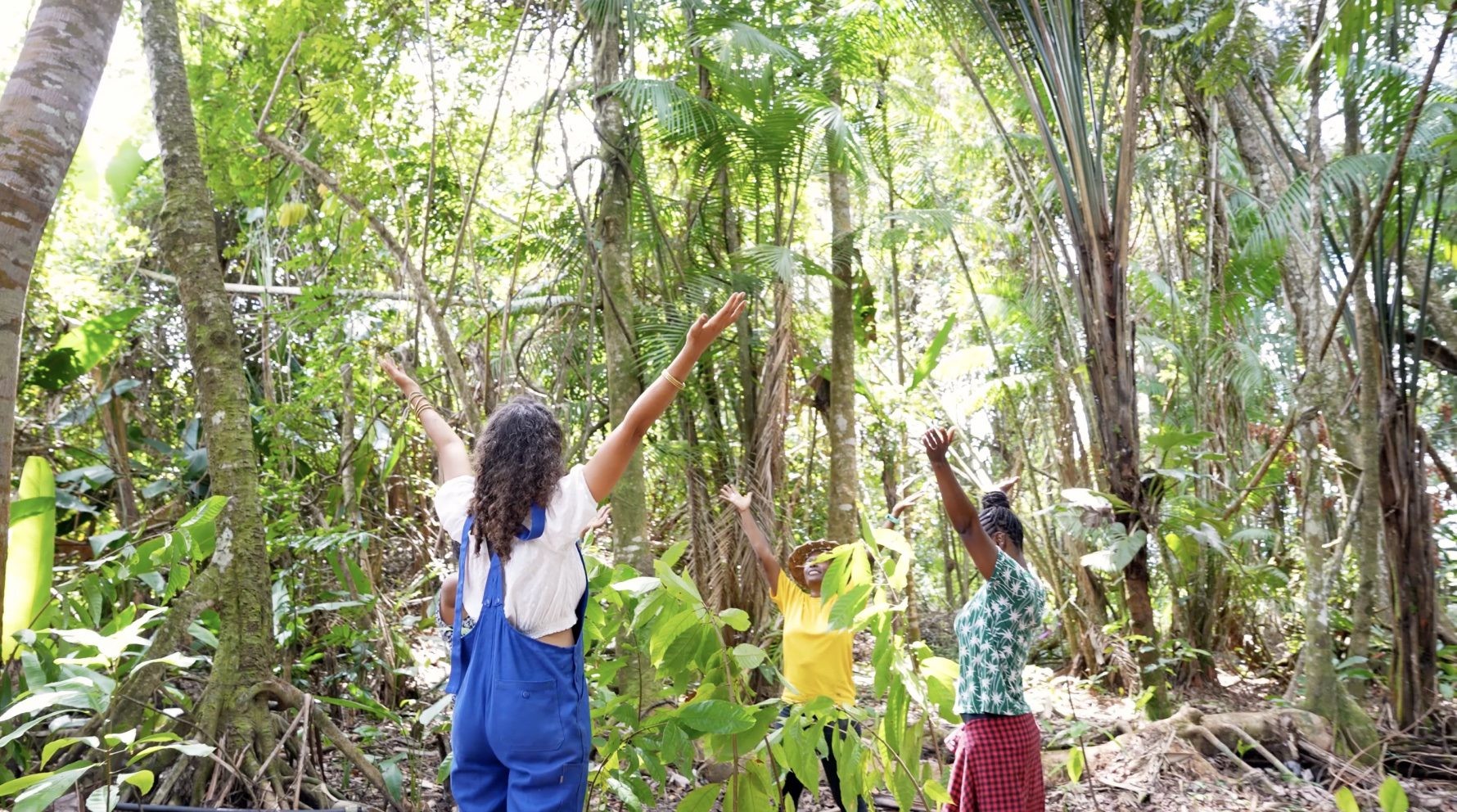
Amakaba, introduction video (still), 2021. Courtesy of Amakaba.
C&: Can you tell us something about Mèt Gran Bwa, the forest spirit?
TR: In French Guiana, there are many stories of people getting lost in the forest and taken by Mèt Bwa. He is a terrifying figure in folktales, but also the guardian of the mystics of the forest. In Vodou, you have Gran Bwa, who is the spirit of healing, initiation rites, and the knowledge keeper of medicinal plants. As the master of the sacred forest, these entities represent the wilderness and are invoked for vigor, strength, plant remedies, and fertility. Before you enter the forest, you have to ask him for protection and guidance. For me personally the earth is deeply feminine, because she is the ultimate giver, so fertile, so mothering, yet so fierce. She is full of entities, Met Bwa being one of them.
We will be inaugurating a new temple for medicinal plants next solstice in London, which will come back to the forest afterwards. It will be the abode of Met Bwa, as the guardian of plant medicine.
C&: In an interview with An Paenhuysen for C& in 2016, you talked about yourself as a health practitioner and the necessity to think about our health more politically. Have we made any progress since then?
TR: Six years ago I was talking about health, for the past four years I talked about healing all day every day, and now I rather speak of spiritual growth. It’s the same journey, the same process, but it gets more and more refined. I’ve gained some depth, spiritual maturity, and humility on the way. The main shift that occurred is one of perspective – I used to stand against so many things. I was excavating collective trauma and so politics motivated my advocacy. Now I prefer to stand for the things I believe in and put my energy towards what I can do to tend the seeds of a more conscious earth. I believe that our inner lands have much influence on how we experience life, so I am committed to supporting the inner journey. Don’t get me wrong, there is still a lot to fight against in the world and activists’ work is so crucial. But my calling lies elsewhere. Well, they are intertwined, as my teacher says: “Social justice is a spiritual practice.”
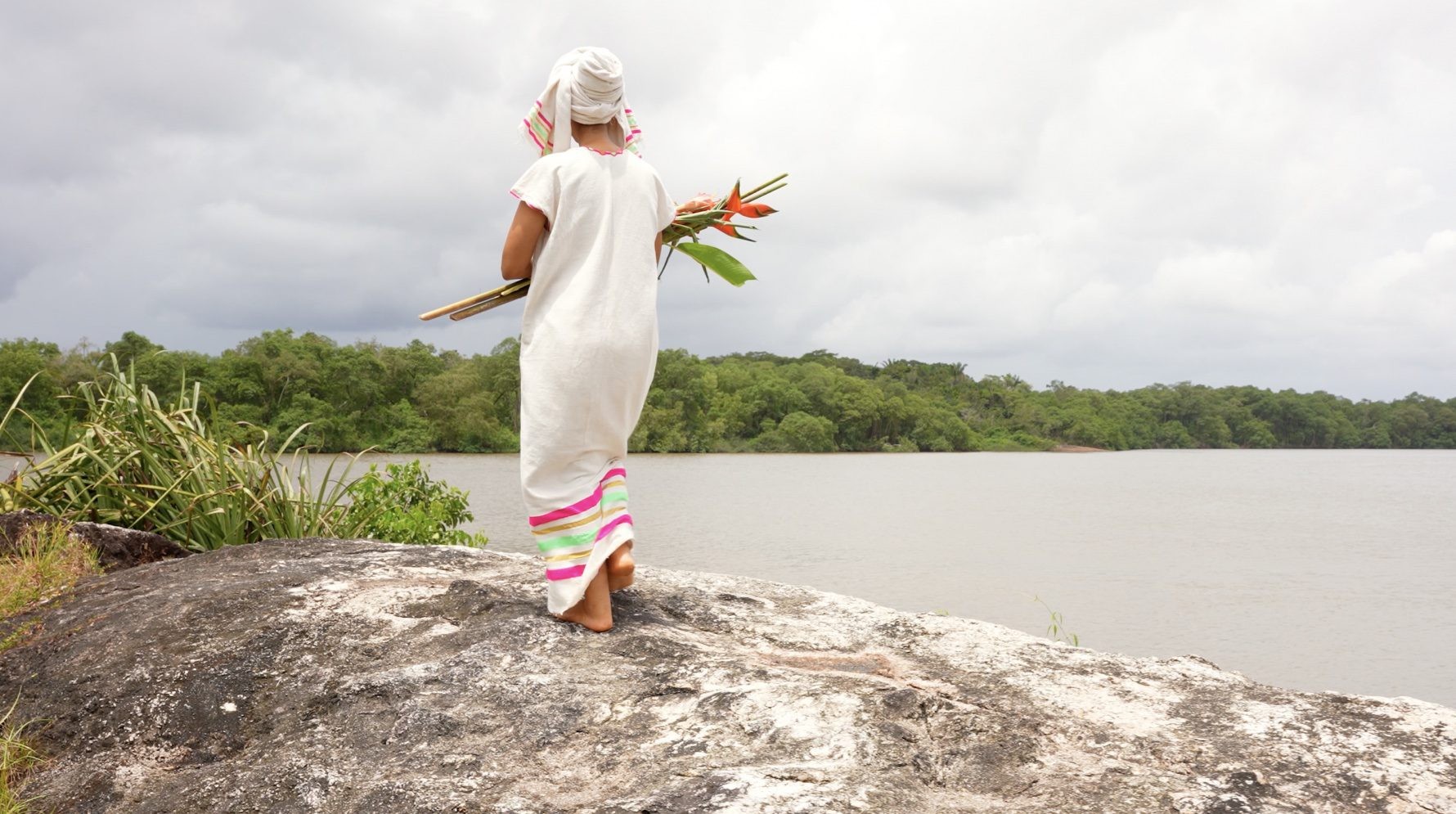
Amakaba, introduction video (still), 2021. Courtesy of Amakaba.
C&: What is the connection between art and spirituality for you?
TR: I guess there is a historical, ancestral connection. Long ago art was made as an offering to the divine, or as a tool to represent, channel, or speak to the divine. It wasn’t a commodity to be sold and shown for personal recognition but an act of devotion, a gesture to bridge i and I, that sometimes involved the whole community or even several generations.
This connection has meant different things at different times in my practice. I first used art to express a spiritual longing, then I used art as an excuse to pursue spiritual explorations, and now I guess I use it to anchor a spiritual center/community, as a support to manifest the vision of Amakaba. As much as the art world can be greedy, exploitative, extractive, and uncaring, there are people out there who really care about the wellbeing of artists, about the context in which they exist, and who try to be as supportive as they can be. I have been really lucky to have such people around me.
C&: Will you focus on this project for now, or are you also working on artworks to be exhibited?
TR: I’m trying to find a balance. I’m struggling a little, but I trust I’ll find a rhythm. Every now and again I feel exhausted, drained, hungry, like I’ve neglected my basic needs because I was people-pleasing again. I used to think that the art was the issue, but this also happens when doing work for Amakaba, so it is something within me that I need to work through. It’s about finding nurturing collaborations. I now only take on projects that can support Amakaba. It’s great because it diversifies my practices, for example through temple architecture and publishing. I recently made a book, titledWomb Consciousness, and I’m now working on Amakaba’s first edition around intergenerational transmission in farming.
Now I’m looking for a museum to buy us chocolate machines. If anyone is reading this, reach out <3
Interview by Theresa Sigmund.
Read more from

Confronting the Absence of Latin America in Conversations on African Diasporic Art

On Exile, Amulets and Circadian Rhythms: Practising Data Healing across Timezones
Read more from
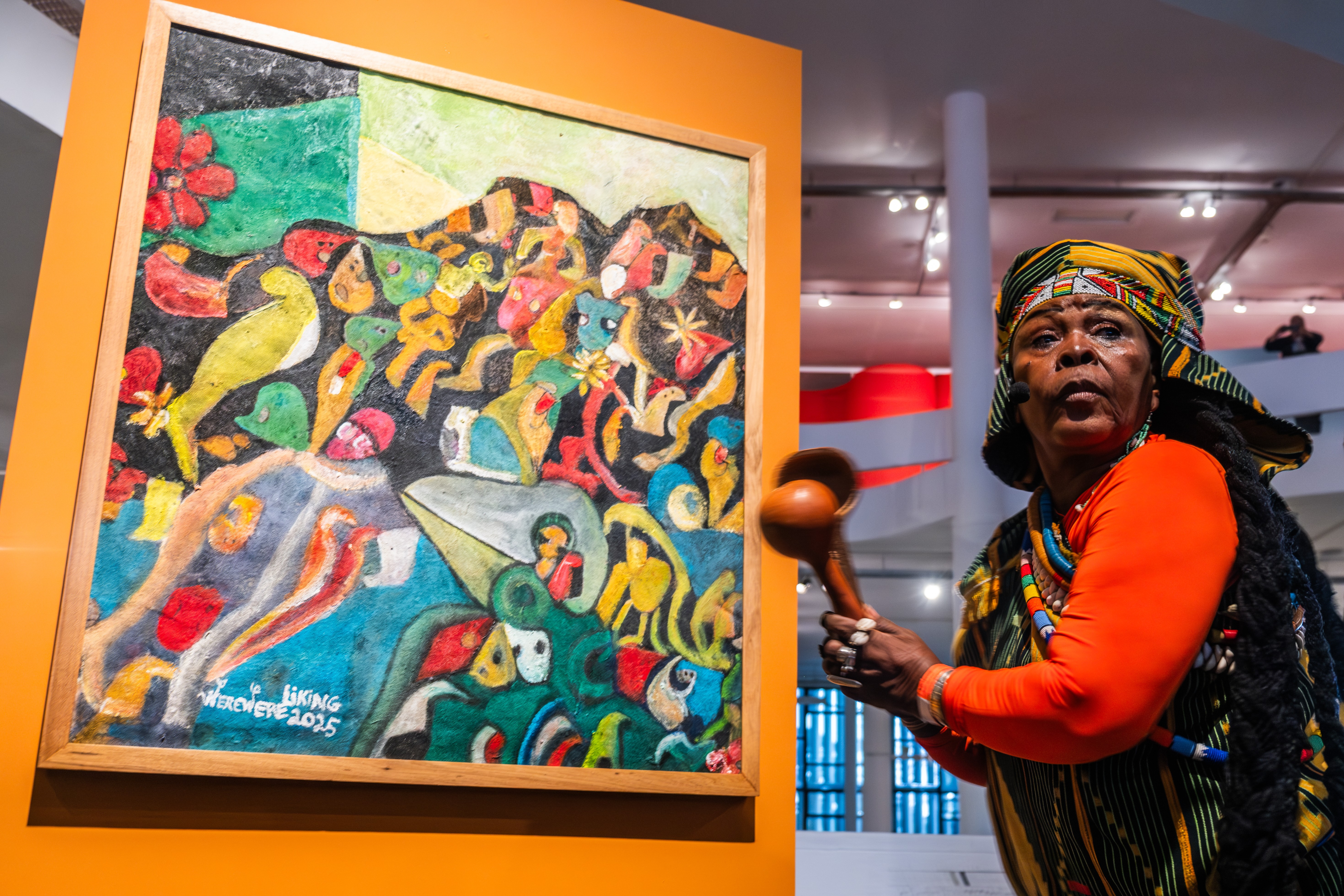
Werewere Liking: Of Spirit, Sound, and the Shape of Transmission
